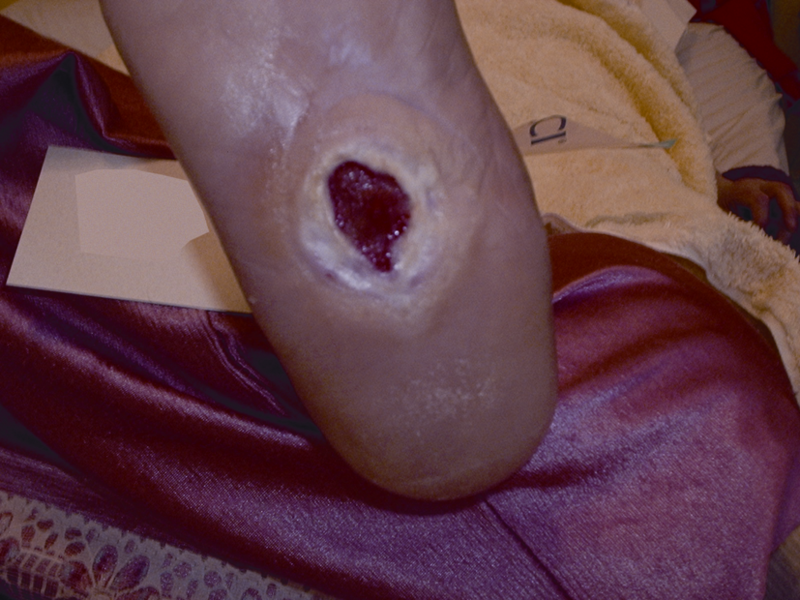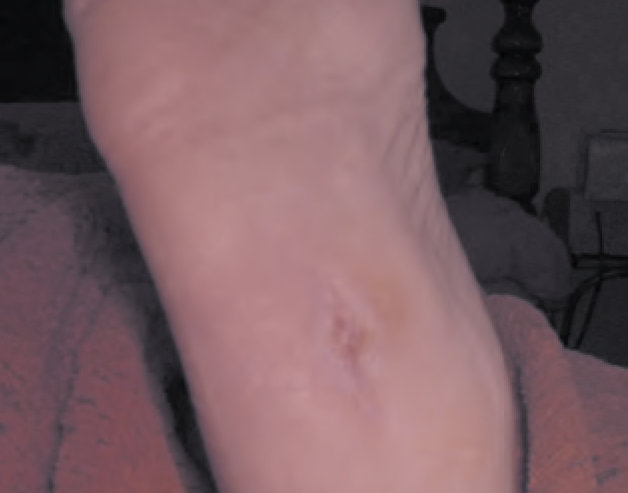Negative pressure wound therapy
Assistant Editor-in-Chief: Sarthak Sachdeva

Acti V.A.C. pump used to create negative pressure and used in conjunction with a variety of KCI dressings.]]
Overview
Negative pressure wound therapy (NPWT, also known as vacuum assisted closure) is a technique of wound closure used to promote healing in large or chronic wounds, fight infection and enhance healing of burns. A vacuum is used to reduce pressure around the wound, drawing out excess fluids and cellular wastes.
A Cochrane Review reviewed studies published regarding NPWT and stated that there was no evidence that the procedure significantly increased the healing time of wounds compared to alternative treatment, calling for more and better research to be performed before a final conclusion could be reached.
Overview
NPWT seals the wound with a gauze or foam dressing and applies negative pressure to the wound bed with a tube threaded through the dressing. The vacuum may be applied continuously or intermittently, depending on the type of wound being treated and the clinical objectives. Intermittent removal of used instillation fluid supports the cleaning and drainage of the wound bed and the removal of infectious material.[1]
Components
V.A.C has 3 critical components-
- V.A.C Therapy unit - a software to provide intermittent and continous negative pressure to the wound
- SensaTrac Technology - a technology to regulate pressure at the wound site
- V.A.C GranuFoam dressings - a foam to regulate pressure through pores.In addition to wound healing , the foam could even act as a splint in its compressed form . Furthermore , the foam dressing is also able to conform to various contour defects , making the therapy extremely useful for different anatomical areas . Thus V.A.C indeed proves to be a promising therapy for future
Technique
NPWT has two forms which mainly differ in the type of dressing used to transfer NPWT to the wound surface: gauze or foam. The gauze type is referred to as the Chariker-Jeter technique and involves a drain wrapped in gauze topped by a sealed transparent dressing. The foam type uses a sealed polyurethane foam dressing attached by a tube to a vacuum pump.

A dressing, containing a drainage tube, is fitted to the contours of a deep or irregularly-shaped wound and sealed with a transparent film. The tube is connected to a vacuum source, turning an open wound into a controlled, closed wound while removing excess fluid from the wound bed to enhance circulation and remove waste from the lymphatic system. The technique is usually used with chronic wounds, or wounds that are expected to present difficulties while healing (such as those associated with diabetes or when the veins and arteries are unable to provide or remove blood adequately).[2]
Effectiveness
Though there is evidence to suggest NPWT may removes excess serous fluids that can inhibit wound healing[3] as well as interstitial fluids,[4] a Cochrane Review stated that the studies conducted to date were methodologically flawed and there is no evidence that NPWT significantly speeds healing when compared to alternative treatments. The review concludes that more and better-quality research must be performed before a final conclusion can be reached.[5]
KCI
In 1995 the Food and Drug Administration was presented with and first approved negative pressure equipment that was subsequently marketed as the VAC (for vacuum assisted closure), by Kinetic Concepts, Inc. In medical trials, the treatment was as safe, and more effective, than moist treatment for diabetic ulcers.[6]
Gallery
-
Diabetic foot ulcer prior to treatment
-
After treatment
References
- ↑ Moch D, Fleischmann W, Westhauser A (1998). "[Instillation vacuum sealing--report of initial experiences]". Langenbecks Arch Chir Suppl Kongressbd (in German). 115: 1197–9. PMID 9931834.
- ↑ Miller, MS (2005). "Negative pressure wound therapy options promote patient care". BioMechanics. 12 (9): 49–57. Unknown parameter
|coauthors=ignored (help) - ↑ Bucalo B, Eaglstein WH, Falanga V (1993). "Inhibition of cell proliferation by chronic wound fluid". Wound Repair Regen. 1 (3): 181–6. doi:10.1046/j.1524-475X.1993.10308.x. PMID 17163887. Unknown parameter
|month=ignored (help) - ↑ Morykwas MJ, Argenta LC, Shelton-Brown EI, McGuirt W (1997). "Vacuum-assisted closure: a new method for wound control and treatment: animal studies and basic foundation". Ann Plast Surg. 38 (6): 553–62. PMID 9188970. Unknown parameter
|month=ignored (help) - ↑ Ubbink DT, Westerbos SJ, Evans D, Land L, Vermeulen H (2008). "Topical negative pressure for treating chronic wounds". Cochrane database of systematic reviews (Online) (3): CD001898. doi:10.1002/14651858.CD001898.pub2. PMID 18646080.
- ↑ Blume PA, Walters J, Payne W, Ayala J, Lantis J (2008). "Comparison of negative pressure wound therapy using vacuum-assisted closure with advanced moist wound therapy in the treatment of diabetic foot ulcers: a multicenter randomized controlled trial". Diabetes Care. 31 (4): 631–6. doi:10.2337/dc07-2196. PMID 18162494. Unknown parameter
|month=ignored (help)
de:Vakuumtherapie nl:Negatieve-druktherapie sk:Podtlakové uzatváranie rán

